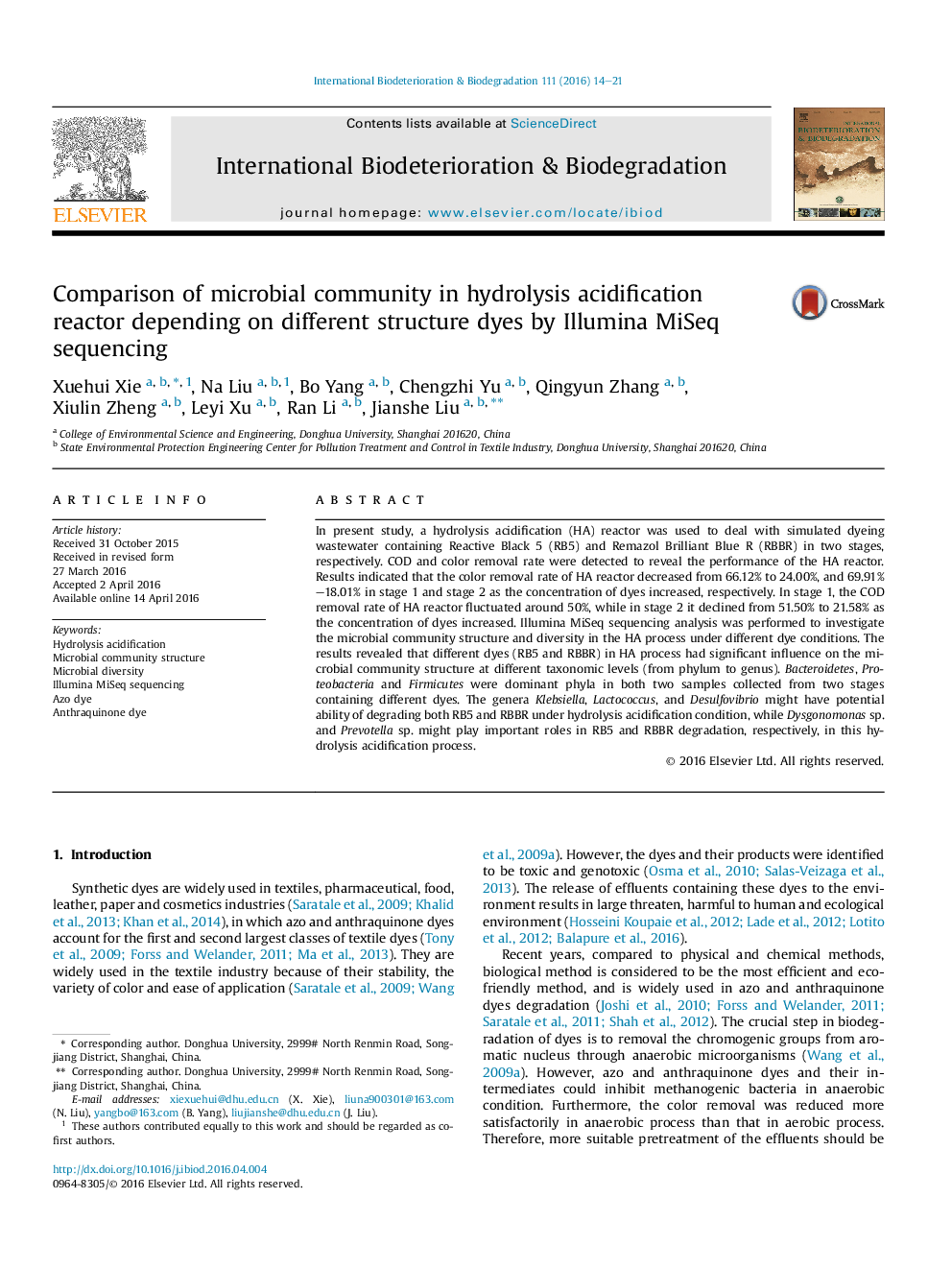| Article ID | Journal | Published Year | Pages | File Type |
|---|---|---|---|---|
| 4364238 | International Biodeterioration & Biodegradation | 2016 | 8 Pages |
•Illumina MiSeq sequencing analysis was performed to reveal microbial community.•The microbial community structure varied largely depending on different dyes.•Several genera might play important roles in degradation of RB5 and RBBR.
In present study, a hydrolysis acidification (HA) reactor was used to deal with simulated dyeing wastewater containing Reactive Black 5 (RB5) and Remazol Brilliant Blue R (RBBR) in two stages, respectively. COD and color removal rate were detected to reveal the performance of the HA reactor. Results indicated that the color removal rate of HA reactor decreased from 66.12% to 24.00%, and 69.91%–18.01% in stage 1 and stage 2 as the concentration of dyes increased, respectively. In stage 1, the COD removal rate of HA reactor fluctuated around 50%, while in stage 2 it declined from 51.50% to 21.58% as the concentration of dyes increased. Illumina MiSeq sequencing analysis was performed to investigate the microbial community structure and diversity in the HA process under different dye conditions. The results revealed that different dyes (RB5 and RBBR) in HA process had significant influence on the microbial community structure at different taxonomic levels (from phylum to genus). Bacteroidetes, Proteobacteria and Firmicutes were dominant phyla in both two samples collected from two stages containing different dyes. The genera Klebsiella, Lactococcus, and Desulfovibrio might have potential ability of degrading both RB5 and RBBR under hydrolysis acidification condition, while Dysgonomonas sp. and Prevotella sp. might play important roles in RB5 and RBBR degradation, respectively, in this hydrolysis acidification process.
